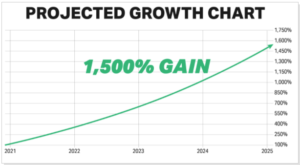Major real estate investment trusts across the U.S. are up by approximately 2.5% quarter over quarter, suggesting that investors have started testing the waters. Although most REITs have lagged behind other risk-on assets since the turn of the year, key indicators suggest a shift in sentiment is on the horizon.

Source: S&P Global
With this in mind, here is an investment case for real estate and an analysis of two REITs to consider.
Why it is a good time to invest In REITs
Various indicators, including market risk premiums, suggest that REITs are currently well placed.
First, credit spreads within the U.S. have diminished in recent months, illustrated by lower credit default swap values. Lower credit risk usually contributes to REIT valuations, especially commercial ones, as it minimizes counterparty risk.

Source: worldgovernmentbonds.com
Further, term premiums on U.S. 10-year zero coupon bonds are trending downward, implying lower risk premiums on long-duration assets. REITs are secured by various types of real estate; however, all kinds of real estate are typically long-duration assets, meaning a lower term premium is encouraging to witness.

Source: FRED
Lastly, I believe a much-talked-about interest rate pivot will lead to a surge in REIT prices before the end of the year. Sure, most property buyers will probably wait for interest rates to taper before investing; however, the financial markets price events in advance, meaning REITs might surge before actual property prices do.
Essential Properties Realty Trust
Essential Properties Realty Trust Inc. (EPRT) operates an agile business model focusing on middle-market commercial real estate. In addition, the REIT has a sale-leaseback program, allowing it to profit from tenants seeking urgent liquidity.
The REIT owns 1,742 properties at a 99.9% occupancy rate in 48 states. As visible in the diagram below, the REIT has exposure to numerous service businesses, which run lean income statements. This provides Essential Properties Realty Trust with secular growth, as conveyed by its illustrious capitalization rate of 7.4%.

Source: Essential Properties Trust
Essential Properties released its second-quarter earnings results last week, echoing a robust quarter led by a 5% year-over-year increase in funds from operations and a 30% increase in income per share.
Adding to its headline results is $277.4 million worth of quarterly closed investments, including 29 units with capitalization rates between 7.4% and 8.4%. Approximately 995 of the transactions were sale-leasebacks with a weighted average lease term of 19.4 years.
From a valuation perspective, Essential Properties is trading at a price-to-funds from operations ratio of 14.83, which is a bit high considering an industry average of around 13. However, the REIT's high-growth business model is part and partial to why it has elevated price multiples.

In closing coverage of this asset, it is worthwhile to mention Essential Properties's dividend yield of 4.54%, which, if coupled with its three-year average dividend growth rate of 6.9%, conveys a dividend growth opportunity.
Broadstone Net Lease
In a similar vein to Essential Properties, Broadstone Net Lease Inc. (BNL) invests in single-tenant commercial properties. However, instead of operating a sale-leaseback program, the company focuses on a vertically integrated business model spanning from acquisitions to management.
Broadstone's net lease program and active operational presence allow it to cut costs and operate a business with wider profit margins than most REITs, which is why its gross profit margin is within the 84th industry percentile. Moreover, the company has solid aggregate escalations of 2% per year coupled with a weighted average lease term of 10.4, allowing for continuous value accretion.

Source: Broadstone
Broadstone's second-quarter earnings report was disseminated to the public on Wednesday, which included revenue of $109.35 million and funds from operations per share of 38 cents.
Although the REIT's second-quarter top and bottom-line earnings settled slightly below estimates, its salient features are looking up. For instance, the fund's portfolio has a capitalization rate of 5.9%, which is above the U.S. average.

Source: NaREIT – Property Yields (U.S. REITs and Private Investment Funds)
Further, the REIT invested $64.9 million into industrial properties that look set to yield a capitalization rate of 7.3%. Additionally, $69.4 million in properties were sold during the period; the sold properties possessed a capitalization rate of 5.6%, suggesting the recent asset turnover might add to shareholder value, assuming similar capital gains prospects.
Broadstone has a debt-to-earnings before interest and tax ratio of 5, which is slightly higher than most equity investors would ideally like to see. However, with high embedded growth, a price-to-funds from operations ratio of 1.98 and a dividend yield of 6.69%, the REIT is arguably a hot prospect.

Risks included in REIT investing
Although core indicators suggest that REITs are in a good space, investors must keep in mind that real estate is a procyclical asset class that often experiences significant losses. Such losses might be triggered by a recession, which the inverted U.S. yield curve suggests is still highly likely to happen.

Furthermore, corporate earnings are starting to taper, lending the argument that counterparty risk might soon be a reality. In fact, many property owners and tenants are at risk of faltering in the coming quarters, with interest rates still at the higher end of the spectrum.
Concluding thoughts
Key indicators suggest risk premiums on REITs are abating, which might lead to a spike in valuations.
Among the two most overlooked and underappreciated REITs I could find were Essential Properties Realty Trust and Broadstone Net Lease. While not homogenous, both assets have robust underlying asset bases and are flashing signs of lucrative shareholder value.
Originally published on GuruFocus.com











